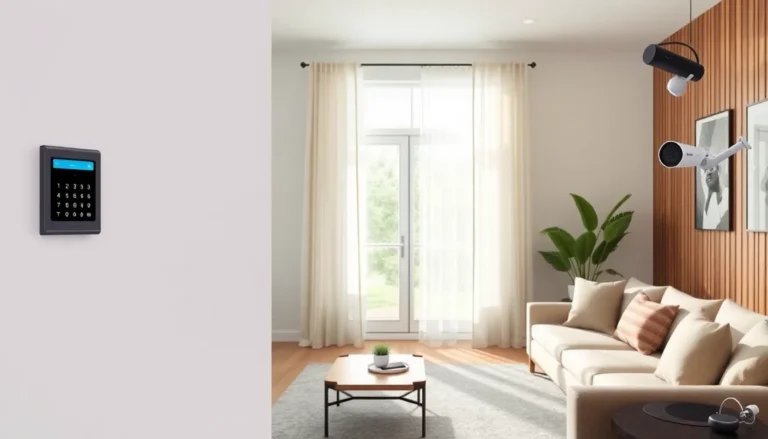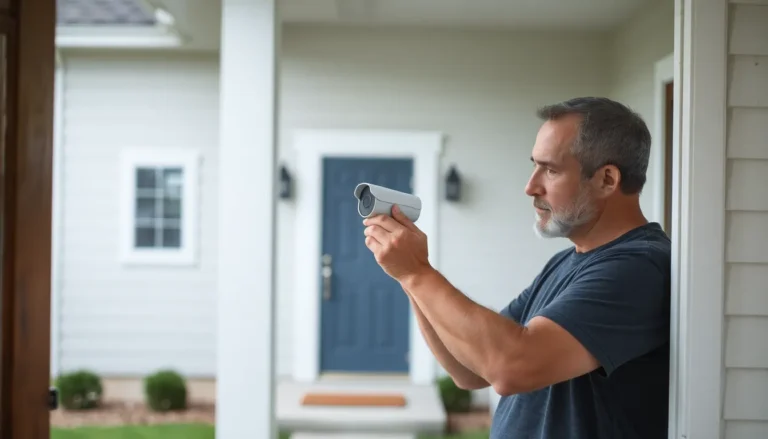In a world where house hunting has gone digital, real estate websites are no longer just online listings—they’re the virtual storefronts of dreams. With buyers and sellers swiping left and right like it’s a dating app, staying ahead of the curve is crucial. The trends shaping these platforms can make or break a deal faster than you can say “open house.”
From virtual tours that make you feel like you’re walking through a property in your pajamas to AI chatbots that know your preferences better than your best friend, the real estate website landscape is evolving at lightning speed. If you want to stand out in this competitive market, understanding these trends isn’t just a good idea; it’s essential. Buckle up as we dive into the latest innovations that are transforming how properties are bought and sold online.
Table of Contents
ToggleCurrent Real Estate Website Trends
Real estate websites are increasingly adapting to new technological advancements. Notable trends provide insights into user preferences and enhance the online experience for buyers and sellers.
Mobile Optimization
Mobile optimization stands crucial in the real estate sector. Statistics show that over 60% of property searches occur on mobile devices. Websites must load quickly and display content clearly on smartphones and tablets. Implementing responsive designs ensures seamless navigation and an improved browsing experience. Buyers expect quick, easy access to property listings, making mobile-friendly designs a top priority. Adapting to this trend increases engagement and potentially leads to higher conversion rates.
User Experience Design
User experience design influences how potential buyers interact with real estate websites. Intuitive navigation is essential for keeping users informed and engaged. Prioritizing clear layouts helps users find information quickly. Effective use of visuals, like images and videos, enhances property listings and captures attention. Personalization features, such as customized search filters, cater to individual preferences. Implementing these design elements not only improves satisfaction but also encourages return visits and fosters trust in the brand.
Content Marketing Strategies

Content marketing in real estate has evolved, emphasizing the importance of visual assets. Engaging photos and videos significantly impact user interaction with listings. High-quality images attract more clicks, while video tours offer immersive experiences that showcase properties uniquely. Including drone footage can highlight a property’s location and surroundings effectively. Utilizing platforms like Instagram and Pinterest can enhance visibility, as these channels thrive on visually appealing content.
Visual Content Utilization
Proper use of visual content is essential for real estate marketing. Effective images create strong first impressions, enabling potential buyers to visualize their new homes. Incorporating virtual reality tours allows users to explore properties from different angles. Infographics offering local market statistics can inform and engage audiences. Attention to detail in visuals can also enhance the overall browsing experience.
Blogging and SEO Techniques
Blogging serves as a vital tool for improving a real estate website’s SEO. Quality content addressing local real estate trends attracts organic traffic. Consistently updating blogs with relevant keywords increases visibility on search engines. Utilizing long-tail keywords can drive targeted visitors searching for specific properties. Engaging storytelling can keep readers interested and encourage sharing, expanding the reach of the content.
Technology Integration
Technology integration is vital for modern real estate websites, enhancing user experiences and streamlining processes.
Virtual Tours and 3D Listings
Virtual tours and 3D listings transform property showcase. Buyers can view homes remotely, saving time and effort. Nearly 75% of homebuyers consider 3D tours essential in their search. Enhanced visuals captivate users, offering immersive experiences that traditional photos can’t compete with. This innovative feature helps sellers attract a wider audience, ultimately facilitating faster sales. Listings with virtual tours receive 95% more inquiries than those without. Providing these viewing options caters to diverse buyer preferences, making properties more appealing.
Chatbots and AI in Real Estate
Chatbots and AI enhance customer interaction on real estate websites. Chatbots are available 24/7, answering queries and providing vital information instantly. Over 50% of buyers prefer interacting with AI options for quick responses. Their ability to engage users in real-time improves customer service and satisfaction. Additionally, AI algorithms analyze user behavior, personalizing property recommendations effectively. This tailored approach increases user engagement, leading to higher conversion rates. Implementing chatbots streamlines communication, ensuring potential buyers receive timely support during their search.
Social Media Influence
Social media platforms play a crucial role in shaping real estate website trends today. They facilitate engagement and drive traffic, making them indispensable tools for real estate professionals.
Utilizing Platforms for Engagement
Employing platforms like Instagram and Facebook fosters interaction between real estate agents and potential buyers. Engaging posts with high-quality visuals attract attention and showcase properties effectively. Additionally, utilizing stories and reels helps to create a sense of urgency by highlighting new listings or open houses. Connecting with local communities enhances brand visibility, as users often share recommendations within their networks. Incorporating user-generated content can also add authenticity, engaging audiences through testimonials and experiences. Such interactions not only increase follower counts but build a loyal client base in a competitive market.
Trends in Social Advertising
Leveraging targeted advertising proves vital for real estate agents aiming to reach specific demographics. Nearly 80% of real estate professionals report success using paid social media ads. Ads that feature eye-catching visuals capture user interest, encouraging clicks and inquiries. Additionally, retargeting ads effectively engage visitors who previously interacted with listings, reminding them of properties they may have overlooked. Such strategies focus on lead generation by connecting users with listings aligned with their search criteria. Furthermore, incorporating data analytics aids in measuring campaign effectiveness, allowing agents to refine their strategies based on performance metrics. These advertising trends enhance visibility and drive significant traffic to real estate websites.
Real estate websites are continuously evolving to meet the demands of a digital-savvy audience. By embracing trends like mobile optimization and advanced technology integration, these platforms can significantly enhance user experience. The focus on engaging visuals and effective content marketing strategies also plays a crucial role in attracting and retaining potential buyers.
Staying ahead in this competitive landscape requires real estate professionals to adapt to emerging trends. By leveraging social media and innovative tools like virtual tours and AI chatbots, they can create a more interactive and personalized experience. Ultimately, those who prioritize these advancements will not only improve their online presence but also drive higher engagement and conversion rates.



